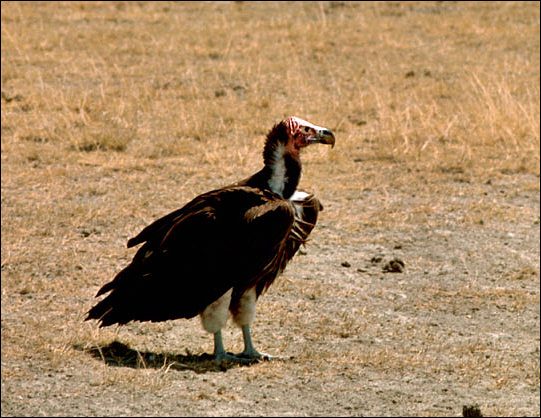

We've seen pictures of African vultures, and most of us think of them as pretty similar to the Turkey Vulture soaring over our desert landscape. Same bare heads, same diet of carrion. Oh sure, there are some differences in colors and sizes, and the Old World Vultures have divided up how they feed on carcasses more finely than over here, but so what? Our own Turkey and Black vultures look different and feed differently, too. And when you come right down to it, the California Condor is really just a big—very big—vulture, and it's definitely different.
As I'm sure you're all aware by now, I'm leading you down
the garden path. What we see in comparing New World and Old World vultures nicely
demonstrates convergent evolution. These are two groups only distantly related, but
adapting through time for a similar way of life. The Old World vultures are members of
the same family as hawks and eagles; our own vultures in a family of their own and
probably more closely related to storks. It's a strange world—enjoy it!

Listen to the Audio (mp3 format) as
recorded by KTEP, Public Radio for the Southwest. ![]()
Contributor: Arthur H. Harris, Laboratory for Environmental Biology, Centennial Museum, University of Texas at El Paso.
Desert Diary is a joint production of the Centennial Museum and KTEP National Public Radio at the University of Texas at El Paso.

A Nubian Vulture from Tanzania. Photograph by Gary M. Stolz, courtesy of the U.S. Fish and Wildlife Service.